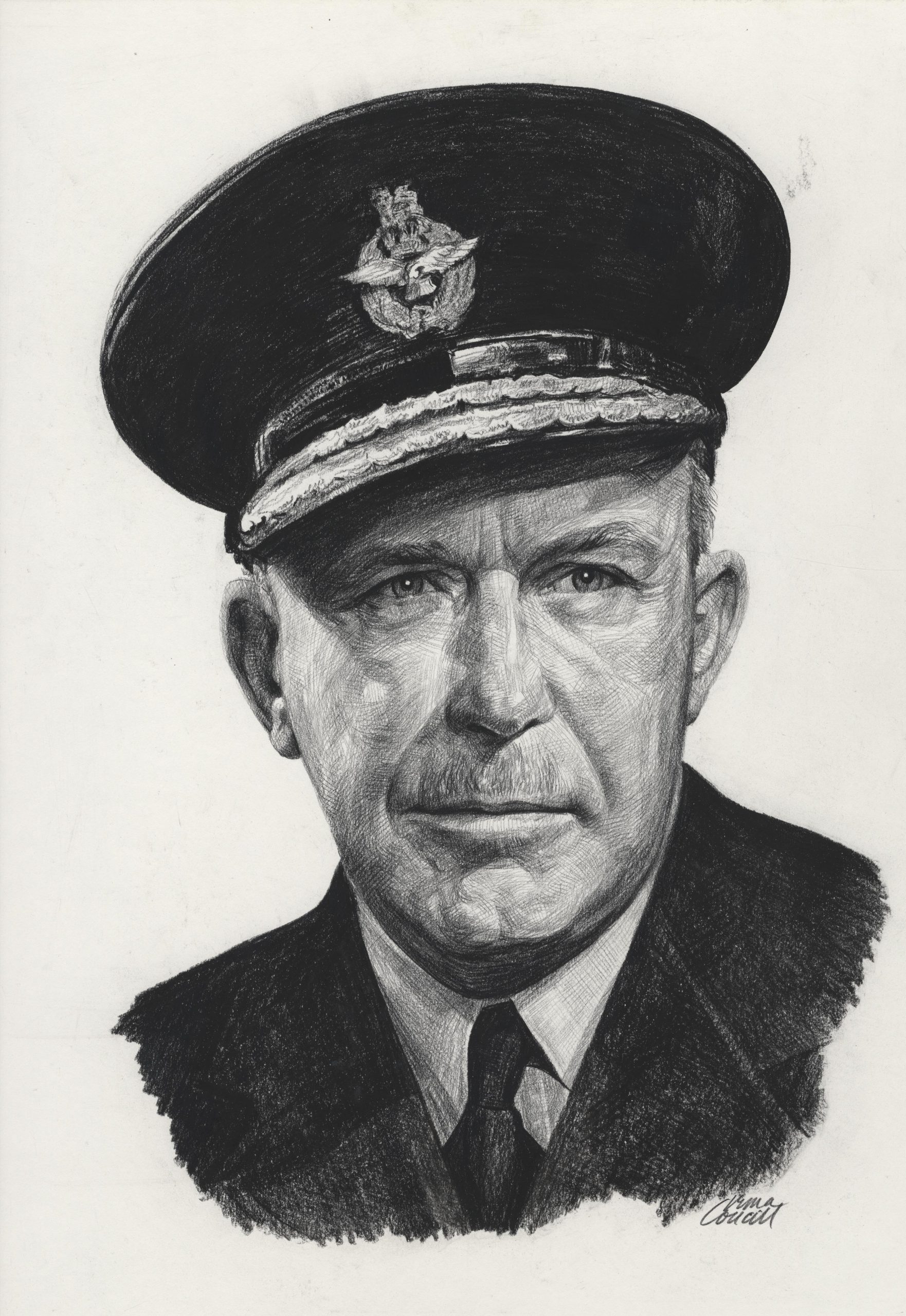Albert Earl Godfrey

Birth Date: July 27, 1890
Birth Place: Killarney, Manitoba
Death Date: January 1, 1982
Year Inducted: 1978
Awards: MC; AFC; The McKee Trophy
His record can be matched only by those airmen of high endeavour and professional calling, who have devoted their lives and skills to the benefit of the free world, despite adversity, and whose contributions have substantially benefitted Canadian aviation
Early Victories
Albert Earl Godfrey, M.C., A.F.C., was born in Killarney, Manitoba, on July 27, 1890. He grew up in Vancouver, British Columbia, where he attended school, and joined the 6th Regiment, Duke of Connaught's Own Rifles in 1902 as a drummer boy and bugler. Godfrey enlisted in the 11th Canadian Mounted Rifles in 1915 and was soon transferred to the 1st Canadian Mounted rifles. He was transferred to the 1st Canadian Pioneer Battalion to embark for England, and the following year was commissioned as a Lieutenant Observer with the Royal Flying Corps (RFC). He was assigned to combat in France with No. 10 Army Co-operation Squadron and No. 23 Fighter Squadron, RFC, and shortly after was credited with downing two enemy aircraft.
Pilot Training
Pilot training in England followed in 1917 with W.G. Barker. Godfrey then joined No. 40 Squadron, RFC, and within nine months had destroyed 13 1/2 enemy aircraft and two observation balloons. For these victories he was awarded the Military Cross (M.C.).
While serving with this unit he designed a mounting for twin machine guns on his Nieuport aircraft, the first single-seater fighter to be so equipped in France. His last operational flying assignment was in September 1917, as a night fighter pilot with 44 Squadron, the Home Defence Unit of the RFC in England. In this role he flew a Sopwith Camel against enemy zeppelins and bombers attacking London.
Promoted to the rank of Squadron Leader in 1918, Godfrey was named Commander of the School of Aerial Fighting at Beamsville, Ontario. For meritorious service he was awarded the Air Force Cross (A.F.C.).
After the War
At war's end he retired from the service and joined the Civil Aviation Branch of the Government of Canada. He flew fishery patrols along the Pacific Coast, and as a civilian pilot, earned both an Air Engineer's Certificate and Commercial Pilot's Licence in 1921.
An Historic Flight
In 1922 he was recalled to service in the newly formed Canadian Air Force, and took command of the Vancouver unit as Squadron Leader when the RCAF came into being two years later.
While serving with Air Force Headquarters at Ottawa, Ontario, Godfrey was assigned in 1926 to accompany an American sportsman, J. Dalzell McKee, on the first flight of a seaplane across Canada. Using the fueling and servicing facilities of the RCAF bases spaced across the nation, and the Ontario Provincial Air Service, the flight in McKee's Douglas seaplane began September 11 in Montreal, Quebec, and was completed September 19 in Vancouver, British Columbia. In nine days Godfrey and McKee covered 3,000 miles (4,800 km), in 35 flying hours. They established three Canadian flight records: it was the first time one aircraft of any type had flown all the way across Canada; it was the first time a seaplane made such a flight; and it was the first time an airplane of any type had flown nonstop across the Rockies from Edmonton to Vancouver.
In accordance with strict military rules and the legalities of government responsibility, A.E. Godfrey had to go on leave from the RCAF and take part in the McKee trans-Canada flight as a civilian. That in itself held implications, for if the project were to come to grief, it would be damaging to his already established and promising military career. Godfrey realized the full implications but pressed forward with the plans to demonstrate the feasibility of a seaplane route across Canada.
The Trans-Canada (McKee) Trophy
In appreciation for the service rendered to him by the RCAF, Mr. McKee presented and endowed the Trans-Canada Trophy. This award was created in 1927 to honour airmen who were considered by a panel of judges to have contributed most substantially to the advancement of Canadian aviation in any given year. The first recipient of the trophy was "Doc" Oaks for the year 1927.
Accomplishments and Honours
In September 1928, Godfrey flew a Fairchild seaplane carrying the first official trans-Canada airmail from Ottawa to Vancouver, making the trip in three days. He served in various posts until the outbreak of World War II, when he was promoted to Air Commodore and given command of Western Air Command. As Deputy Inspector General of the RCAF in 1942, he inspected the force's facilities. He brought to that command a full grasp of international military aviation affairs, having been schooled at both the RAF Staff College and the Imperial Defence College in England. The following year he was promoted to the rank of Air Vice-Marshal. He retired from the service in 1944.
It is significant to note that Godfrey was named winner of the Trans-Canada (McKee) Trophy in 1977, the 50th anniversary of the award. In presenting this honour, the Canadian Aeronautics and Space Institute, custodians of the trophy, stated:
"Godfrey's dedication to the advancement of flying in Canada was not confined to a singular or spectacular feat. His service to Canadian aviation was invariably performed behind the scenes and always as a participant out of the public eye."
Earl Godfrey died in Kingston, Ontario, on January 1, 1982.
Albert Earl Godfrey was inducted as a Member of Canada's Aviation Hall of Fame in 1978 at a ceremony held in Edmonton, Alberta.
To return to the Inductee Page, please click here.
